The good news is thanks to increasingly sophisticated collection such as container deposit schemes (CDS) and global changes in recycling processes, we are recycling more plastic than ever.
While any recycling is a better choice than landfill, there is a hierarchy of plastic which affects where our recycling ultimately goes. Cleaner plastic is more valuable than plastic contaminated with food. Clear plastic is more reusable. Hard plastics are higher quality than thin plastics such as cling film.
The cleaner the plastic, the more valuable it is. This is an advantage of container deposit schemes – they produce much cleaner waste, which ultimately means more plastic can be recycled.
As diligent as Australians have been in sorting their household recycling, the unfortunate reality is that it is not clean enough. The wrong materials (such as plastic bags) too often contaminate the waste stream – a major factor in China’s recent decision to stop importing this waste from Australia.
Until recently, Australia, alongside other Western nations, was selling plastic waste to China to be recycled. Changes began to occur in 2013, when China developed its Operation Green Fence policy, with strict new standards for unwashed, contaminated, mixed or dirty materials. It went on to ban 24 types of scrap from January this year.
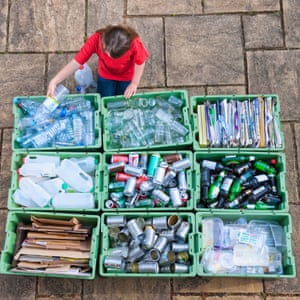
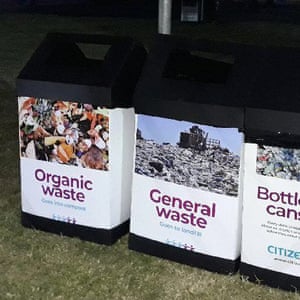
- Container Deposit Schemes are the best way to dispose of used plastics and ensure they are re-purposed, in turn reducing the need for new plastic production.
So where does our recyclable waste go if it’s no longer exported to China? That’s a question with which Australian local, state and federal governments are grappling. Without strong recycling infrastructure, some waste management companies say they’re forced to place recyclable plastic in landfill.
According to a report from the Australian Packaging Covenant Organisation, released in February, in the year ending June 2018 a third of all Australian plastic was recovered for recycling, and 14 per cent was repurposed into new products. More than half of plastic waste in Australia ended up in landfill.
China’s decision might make these figures even worse. But recycling experts say it’s also an opportunity for Australia to develop its own recycling industry and bring some much-needed innovation to the global recycling market.
Jeff Angel is an executive director at the Total Environment Centre and the Boomerang Alliance, and a founding board member of Citizen Blue, established by six environmental groups in 2017. The not-for-profit group has an ambitious aim: to make Sydney the cleanest city in the world by 2020 and recover up to 350 million pieces of rubbish, ensuring no waste enters our waterways.
Angel has played a lead role in the waste revolution, advocating for CDS since the 1970s. The schemes are powerful, Angel says, because they provide an incentive for consumers to deliver empty, uncrushed and unbroken plastics, glass and aluminium to locations where they are sorted and cleaned, resulting in high levels of successful recycling.
Angel says the schemes are the best way to dispose of used plastics and ensure they are re-purposed, in turn reducing the need for new plastic production. His view is that if such programs aren’t adopted, councils may simply put otherwise valuable plastic waste into landfill or incinerators.
The material being collected under the container deposit scheme sells for more than what’s in the recycle bin … and because it’s cleaner it’s far more attractive to buy it for recycling.
“We’re confronted with a fork in the road: landfill waste to energy, or new, sophisticated cleaner processes. The alternative is better source separation, so that it’s cleaner and doesn’t get messed up in the comingle.”
The schemes also make sure that our passion for recycling continues, says Angel, as older community members fondly remember old schemes and assist younger family members to participate in the new ones.
“The parents are pleased that it’s teaching kids about recycling, and you can see that they are very enthusiastic about it,” he says.
“Even though we hadn’t had bottle refunds for 30 to 40 years [in NSW], people still value the memory and the purpose [from the 1970s]. Now, we’re seeing a new generation who feel the same way, and will feel good about it for the rest of the lives and pass it on to their children, too.”
In NSW, the Return and Earn container deposit scheme began in December 2017. There are now more than 640 collection points across the state, with more than 1.5 billion drink containers returned to date. It was the third scheme of its type in Australia, with South Australia laying claim to the longest running scheme in the country.
State-based schemes are sparking Australia-wide interest. In the lead up to the federal election, the Labor Party announced a national harmonisation of existing state schemes, as well as inviting other states to become a part. This was all part of a $290 million environmental plan.
Big businesses such as The Coca-Cola Company globally understand the importance of producing products that are recyclable and is committed to playing its part, too.
“We all have a role to play. The best way anyone can ensure that any waste material becomes a valuable resource is to return them to recycling programs,” says Jeff Maguire, Group Head of CDS and Sustainable Packaging at Coca-Cola Amatil.
“All of our bottles and cans are already recyclable and the company is dedicated to producing more bottles made from recycled plastic. Coca-Cola Amatil is a supporter of the global company’s 2030 goal to return a bottle or can for every one they produce.
Most plastic bottles are made from either rPET (recycled plastic) or PET, which makes the success rate for recycling of these types of containers potentially really high if we just make sure they are returned via the right bin and processed.
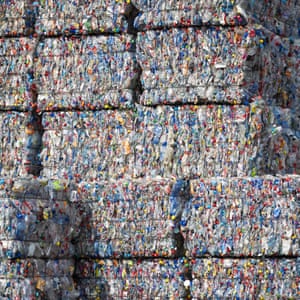
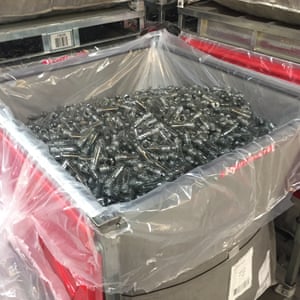
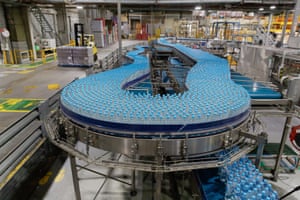
- Preform recycled plastic tubes and bottles made from recycled plastic coming off the line at the Coca-Cola Amatil’s Northmead facility.
Maguire says the best plastic packaging are those marked rPET. This means it’s made entirely of recycled plastic, which has a lower carbon footprint than aluminium or glass.
“The technology exists to take post-consumer bottles and recycle them into food-grade plastic that can be reincorporated into new bottles,” he says.
Maguire supports cost-effective, well-run container deposit schemes, because they help bring us closer to a bottle-to-bottle recycling ecosystem in which every plastic bottle is able to have another life.
“This year we will double the amount of recycled plastic we buy to make our bottles, which will significantly increase the amount of recycled content being used in Australia,” he says.
There are economic benefits to recycling plastic, too. Properly executed recycling programs can improve manufacturing processing, and start to change our view of plastic bottles: from waste products to valuable commodities.
If other big businesses follow Coca-Cola Amatil’s lead, the recycled plastic market could become a new industry. Maguire says maximising the quality of the household and CDS recycling streams would be a major step forward.
“This is something the whole community needs to get behind – we can and will make a difference,” he says.
“We want to make sure what is returned to be recycled actually ends up as new materials. And that means making sure it is in the best possible state when it is sent for re-processing.”
The 2018 National Waste Report estimated that of the 103kg of plastic waste generated per capita, only 12 per cent was recycled, with 87 per cent sent to landfill. And a series of surveys conducted by SMaRT@UNSW found that 65 per cent of people believe recyclables put into council bins goes to landfill. It also revealed 72 per cent would recycle more if the material was reliably recycled.
Angel believes Australia is at risk of losing a generation of dedicated recyclers if community confidence in recycling schemes is not restored – and soon. He says CDS schemes have a vital role to play, because not only can they help reduce the volume of new plastic produced, and increase how much waste is recycled they will have lasting cultural, economic and environmental impacts.
“Having a healthy, growing and vibrant recycling and reprocessing industry in Australia is so important,” Angel says.
With such programs in the pipeline, there is good reason for Australians to be hopeful that recycling is delivering on its promise. A key driver for success, Maguire says, will be the cooperation of business, government and community.
“Ultimately, if the whole economy and community can come together on recycling, we could see a day when no beverage containers end up in landfill or as litter.”
To find out more about Coca-Cola’s commitment to a world without waste, visit.






